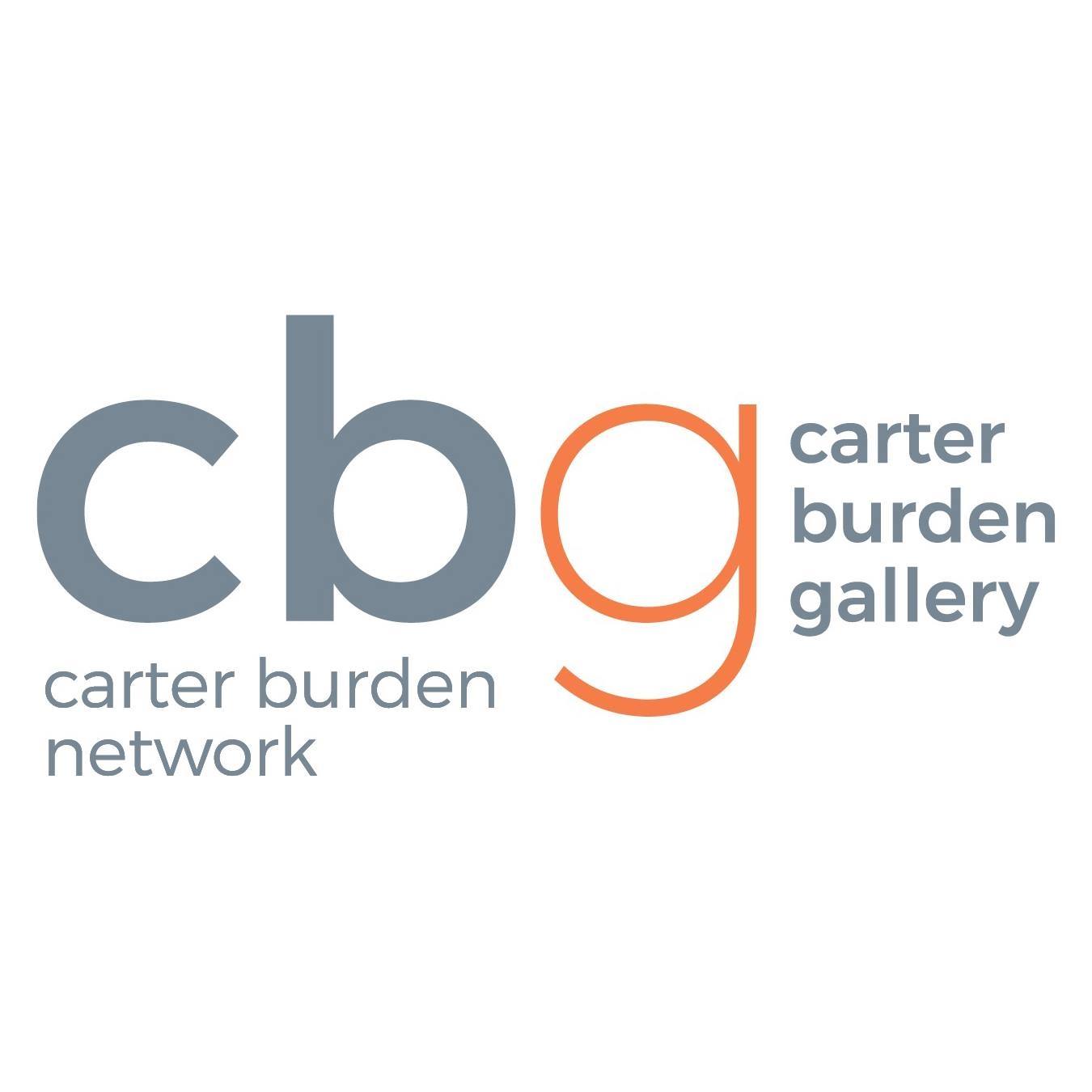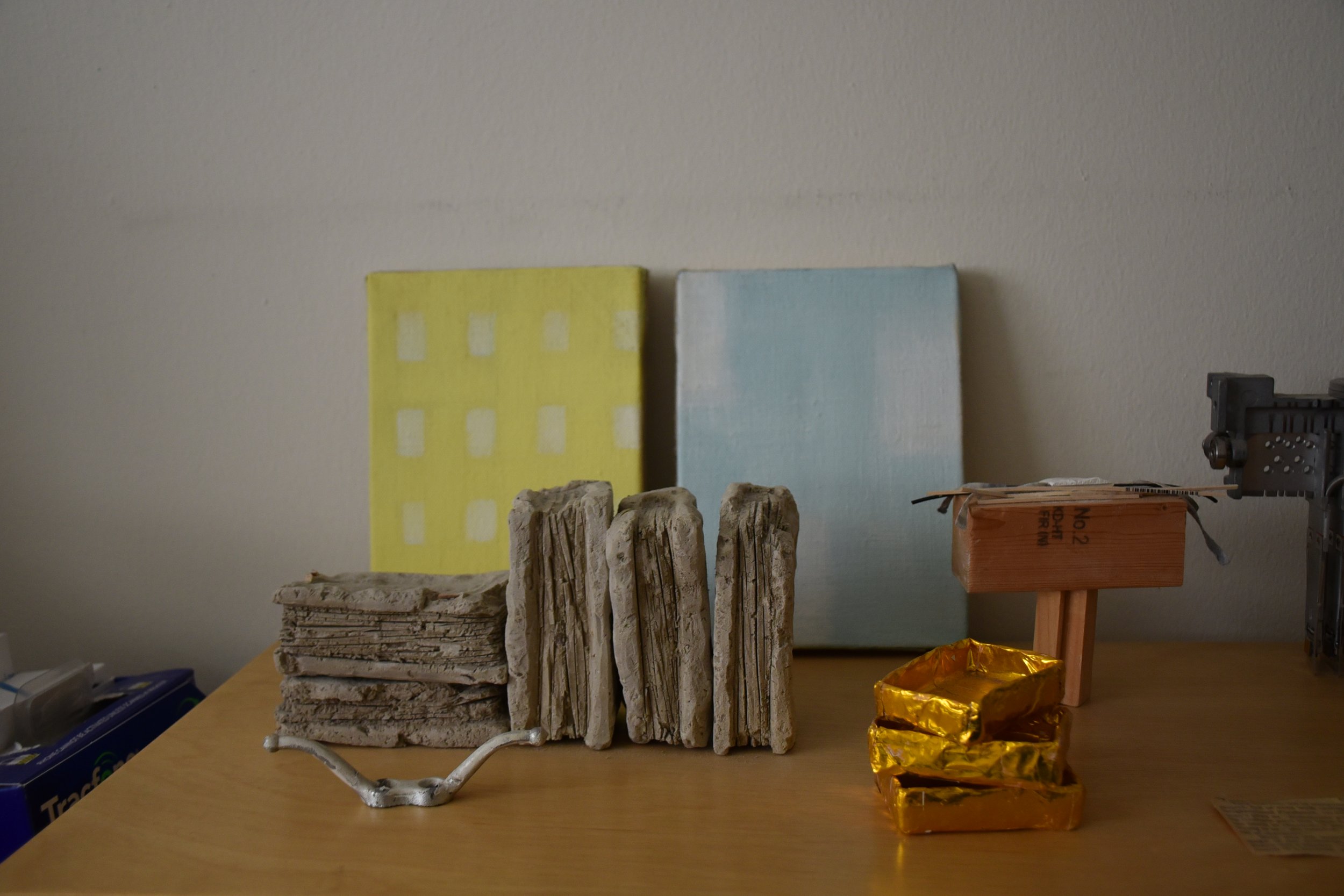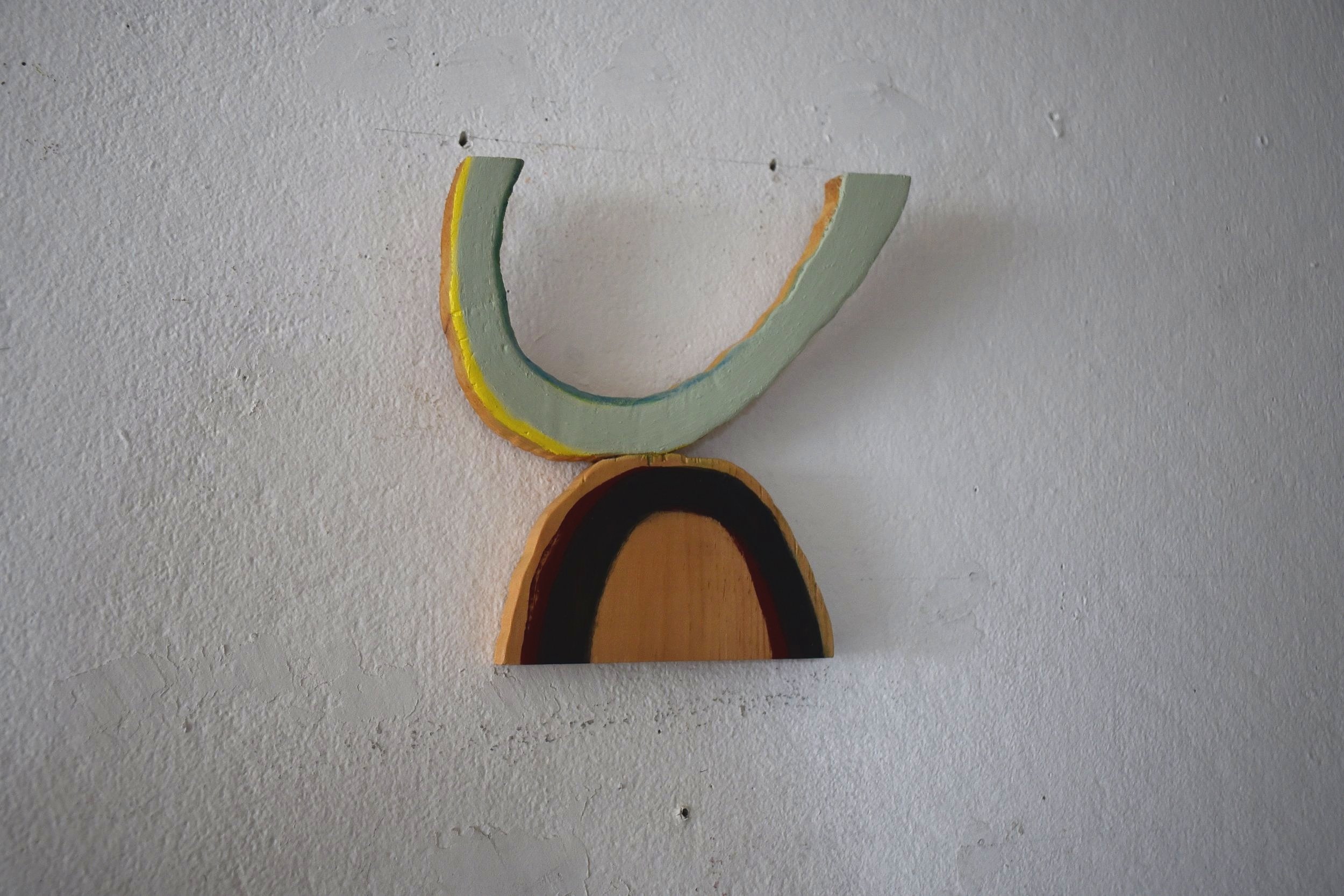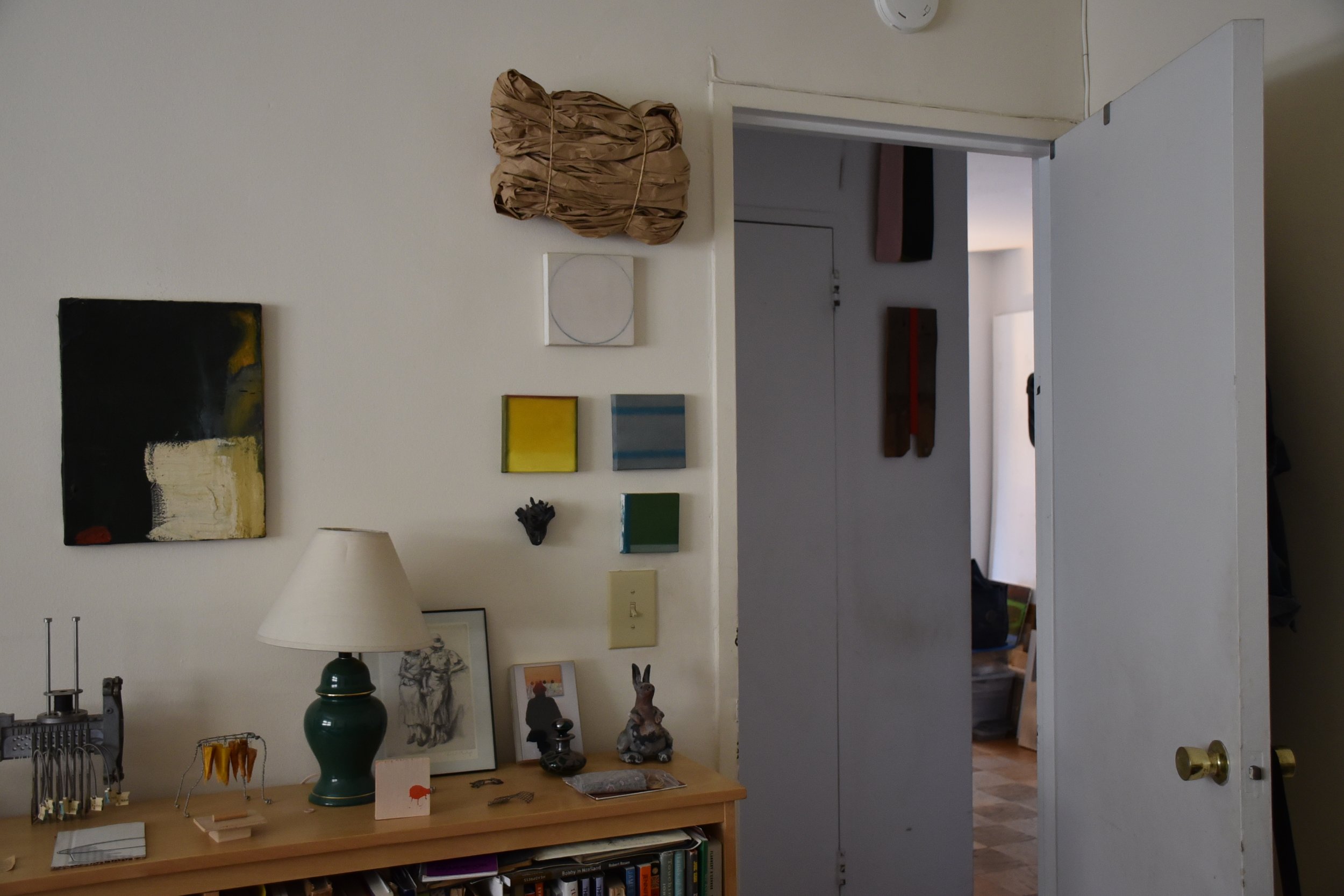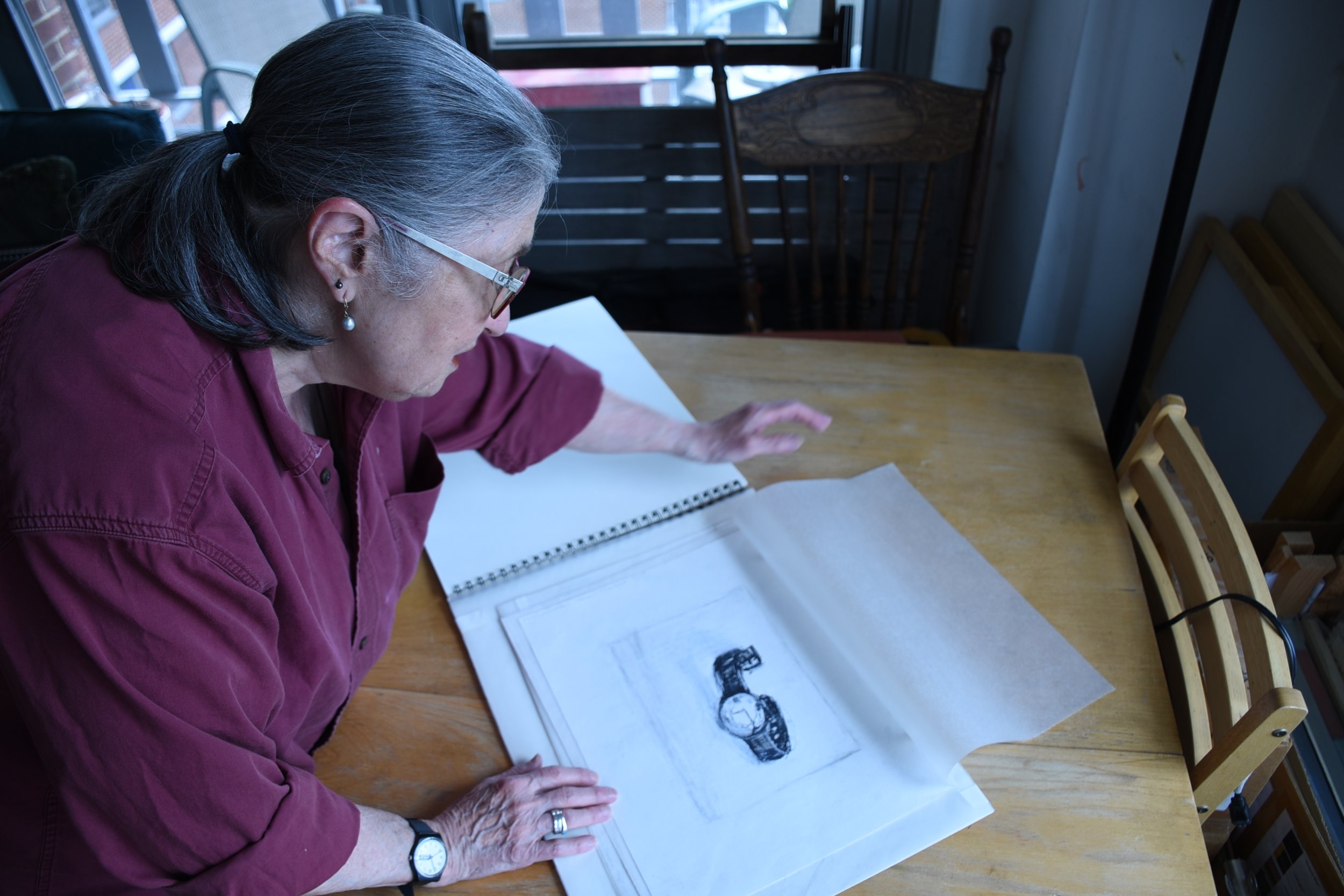Joan Mellon
Joan Mellon in her apartment, 2022
Joan Mellon never learned how to draw or paint. All of her works, from her abstract paintings to her wall pieces, have an essence of pure instinct about them that cannot be manufactured. Her curiosity and desire to experiment with materials and challenge herself is what drives most of her work. A native New Yorker, Mellon grew up in Brooklyn and earned a BFA from the School of Visual Arts and a MA in Liberal Studies at SUNY Empire State College. We had the honor of speaking with Mellon in her apartment, surrounded by her work and books of inspiration from her favorite artists, where we discussed her love of experimenting with materials, the progression of her work, and what she hopes to evoke in her art.
EZ: What brought you to art and creating?
JM: I never even thought about it. I did not draw or paint when I was a kid but I was always making things. I grew up in an apartment in Brooklyn and there were reproductions of paintings everywhere…Toulouse Letrec…Picasso…Diego Rivera…Degas…and without knowing it, these were my life lines…and objects as well. My mother had all of these meaningful objects. I responded to them and I didn’t know that this was a line which I understood. In my 50s, I did a masters that I designed myself and it was all about experience as knowledge and one of the things I came to see through doing…was words were my second language, sight was my first language – but a language that I really understood. My mother was a young widow, my father a creative person – he died when he was 34 but had a full career –, my brother is a musician. I grew up, without knowing it, in an environment that really supported creativity in the arts. I was always making something with my hands. It never occurred to me to go to art school. As a matter of fact, I really had no idea what I wanted to do. I guess it was just always there.
EZ: So you were always making things and creating. In that vein of thought, when were you drawn to painting?
JM: Well, I was in art school in the 60s and it was the heyday of pop art. I liked painting but I had a teacher who did combined type painting and so I started building things and using objects in my paintings á la Rauschenberg, á la Johns – they were my idols. So I made mixed-media works on hand-built structures…Painting came to me later. It was when I moved here, about 30 years ago, that I felt like I wanted to start all over. I wanted to just paint. I love painting, I love looking at paintings, I love painters and I wanted to find out what that meant. And when I think of painting, I think of Matisse, Rothko, Morandi, Susan Rothenberg, David Park, etc. So I started painting and I started looking at objects – which is actually where I’ve come back to recently. But then when I was working, it dawned on me that what I really liked doing was pushing paint around on a canvas, so that's how I went from object to abstraction…In 2017, I had a residency at the Covello Center, but I was told when I first went there that I couldn’t use oil paint. But within 30 seconds, I knew I wanted to make 3 dimensional pieces…At some point I started making these wall pieces and I realized they were more like paintings. And that led me back to painting again! But my work feels like it all somehow goes together.
EZ: I know you’ve said that you’re a very intuitive painter and creator so what does your artistic process look like? Has it changed overtime?
JM: Again, it’s not something I think about really. I like materials. If I see something that I like – it could be a color, it could be an object, it could be string – I get it. I usually don’t know how I’m going to use it and it may be years later that it becomes part of my equipment. I’m drawn to things like shape, the colors of paper – I like working on paper – or a certain quality of paper. For instance, I had bought some rice paper and I had no idea what I was going to do with it. I had also gotten some PVA (polyvinyl acetate) sized. So I had these two materials for a long time and, I don’t know, one day it dawned on me: what would happen if I sized the paper? Now sizing rice paper is like washing a tissue but I figured out a way to do it. It’s very beautiful and it comes out almost like parchment…I had to be really careful…but it was great! But that’s a good example of how my process works. So I was used to using a lot of different materials but when I started painting, I then just focused on paint. After all, when I was in school, I did take a materials class…I knew basic things about paint….The desire I have to do something leads me to learn how to use a material. Especially as a student, you start out by learning the material and then you figure out how to use it…but once I got past that, I’m not afraid of any material. If there’s something I want to do, I learn how to do it. There’s knowledge in experience, and my masters at SUNY Empire State College was all about that…when I started getting back into painting again recently after doing my wall pieces, somehow something had changed, and I think that’s part of the aging process. It’s not bad, it's just very mysterious.
EZ: Looking at your work, I’m very drawn to the fact that you have an interesting combination of very flat textures and more vibrant textures. There’s a simplicity in your work that feels very purposeful. Can you tell me a bit about that?
JM: I’m drawn to simplicity…I can’t help it. No matter how hard I try to make something seemingly complex – and I think simplicity is complex – I just can’t. A couple years ago, someone said to me one of the things they liked about my work was the simplicity and what I said to them was “Simplicity is something I get to, not something I begin with.” I don’t start out with simplicity, that’s just what happens. I can’t seem to do it any other way. You can’t even imagine how many times I’ve tried. It’s just not where I go. The way I came to think about it was I thought of two animals, a giraffe and a rhinoceros – and you can’t explain it! They are what they are.
EZ: What is the hardest part of creating for you
JM: The hardest thing about creativity for me is getting started. Also, the other thing is that sometimes the images I have in mind are of painters that I love. And I want my work to look like theirs. I mean you compare your work to theirs because you want to be able to…not replicate but evoke what you feel when you see their work. One thing I cannot do is formulate – I could never “learn how to draw.” I can draw but I don’t think about how to draw…I’ve done a lot of teaching and, one of the things is, people approach materials differently. I had a friend many years ago who wanted to learn how to paint but she wanted to learn how to paint. She wanted the step-by-step process and I learned a lot from her because one of the things that I saw was that there are different styles of learning. Give me step by step and I just fumble all over the place…Everything I’ve done has always been by instinct, but it's an educated instinct. And its interest as well as instinct; Why am I drawn to David Park? Why am I drawn to Susan Rothenberg? The paintings I’m drawn to are the paintings that mean something, that make me feel something. It’s something I feel from my gut. I always hope that something of that feeling is in something that I make.
EZ: What is it that you hope others see in your work?
JM: I just hope somebody responds or feels something. I have a couple of stories; one of my favorites is that, a couple years ago, I was working on a drawing with stripes going in many directions and, at the time, they were cleaning out the convectors in my building. One of the men that was cleaning it, Sergio, came into my work space, looked at it and said, “Up, down, and sideways – just like my life!” For this guy to have that reaction…I was in seventh heaven. He responded because it said something to him and that was very precious to me. Just when somebody responds…it’s very rewarding.
EZ: In your own words, what does art mean to you and what is the role of art in the world and in the global community?
JM: The thing about art is that it goes beyond what is; you see the possibilities and the meaning of something so you have a chance to take it somewhere else. It’s sort of like a good portrait: you see beyond the person you know. I think art in all forms…takes you beyond what you imagine. It takes you to a wider world.
